Appropriationist Practices and Processes of De/Subjectivation: Charly.gr, Matías Buonfrate and C0d3 P03try in the age of algorithmic governance
Fernanda Mugica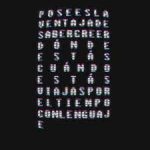
For Saint Augustine, biblical scripture was indispensible to his being able to finish the final draft of his life story. Hemingway advocated stopping midway in a sentence, to ensure a fresh start tomorrow. For us today in the age of algorithmic governance, our stories are more likely to be generated continuously through the words of others using Google search, autocomplete and the algorithm’s statistically-informed guess. In this article, Fernanda Mugica explores the real time writing in charly.gr’s Peronismo (spam), from 2010, a visual poem that combines music and text; Matías Buonfrate's “No poseas un miedo” (2020); and Argentine poet Francisco López Merino's C0d3 P03try.
Better with the Purpose In: or, the Focus of Writing to Reach All of Your Audience
Deena Larsen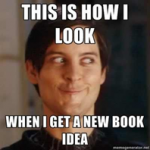
In “Better with the Purpose In: or, the Focus of Writing to Reach All of Your Audience,” Deena Larsen responds in a riPOSTe to Hannah Ackerman’s essay on sound elements in electronic literature, “Better with the Sound On” (ebr October 2021). Larsen approaches Ackerman’s essay from the position of a “dual writer” in exposition and exploration, exploring the question of audience in e-lit, particularly the imagined audience as one that is able-bodied and who may have specific embodied experiences of literature. In order to explore “multiple audiences with the same message,” including by tapping into multiple senses, Larsen draws upon Kate Pullinger’s work Letter to an Unknown Soldier and Amira Hanafi’s A Dictionary of the Revolution.
Neocybernetic Posthumanism and the AI Imaginary: Artificial Communication in Kim Stanley Robinson’s Aurora
Bruce Clarke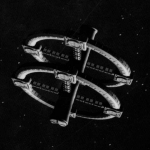
Bruce Clarke focuses transhumanism through the dialects of a neocybernetic systems theory (NST). As Clarke explores the dynamics of a NST, he outlines important components of the AI Imaginary—or, the theoretical and mediated discussions of intelligent technologies--in order to explore how machines, humans, and systems can work together. Specifically, he presents Kim Stanley Robinson’s novel Aurora (2015), as an exception to the AI Imaginary in its representation of “a solidarity that regathers rather than alienates human and machine beings.”
The Metainterface Spectacle
Christian Ulrik Andersen, Søren Bro Pold
Building on their concept of metainterface, Søren Bro Pold and Christian Ulrik Andersen analyze the change in perception and experience that bring forth the always-on(line) mode of engaging with digital content. The notion of ‘spectacle’, in itself having a long history in critical theory, is employed here to discuss media politics and the struggle for power in terms of aesthetized computation, with their main driving forces being data analytics, surveillance and forensics. Pold and Andersen uncover how metainterface spectacle can also serve to empower political agency through reclaiming the apparatus.
Contemporary Posterity: A Helpful Oxymoron
Malthe Stavning Erslev
In his essay, Malthe Stavning Erslev approaches the notion of post-digital from the perspective of a broader cultural phenomenon of posterioriy, emphasizing the fact that the prefix post- still allows for discussion of multidirectional and complex changes that our world is currently undergoing. In order to better grasp all the complexities and interrogate somewhat linear periodization implied by the prefix, Erslev employs the oxymoronic concept of contemporary posterity. At the same time, he ties his theoretical proposition with the extensive analysis of an online community engaging in bot-mimicry.
Platform In[ter]ventions: an Interview with Ben Grosser
Scott Rettberg, Søren Bro Pold, Anna Nacher
In a series of interviews led in February and March 2021, Nacher, Pold and Rettberg examined how contemporary digital art and electronic literature responded to the pandemic. Their project on COVID and electronic literature was funded by DARIAH-EU and resulted in the exhibition prepared for the ELO 2021 Conference & Festival and the documentary film that premiered in June 2021 at the Oslo Poesiefilm Festival. Ben Grosser is one of the creators of 13 works that were interviewed for the project. He generously shares his thoughts on life and creative practice during the pandemic, the impact of platforms on the digital culture and creativity and platform culture in general.
“Is this a game, or is it real?”: WarGames, computer games, and the status of the screen
Naomi Mandel
In her essay “Is this a game, or is it real?”, Naomi Mandel revisits WarGames, a 1983 film that significantly shaped the popular imagination of computer games and military networked technology at the time. Mandel argues that the film prompts a non-mimetic reading that emphasizes deeper, infrastructural and operational meanings of the screen. Placing it in the context of the history of computer games, Mandel points out that WarGames anticipates the evolution of the medium by playing with distinctions between real world and game, and questioning whether such distinction matters at all.
Speculative Interfaces: How Electronic Literature Uses the Interface to Make Us Think about Technology
Jill Walker Rettberg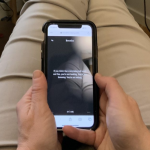
In a study that traverses more than half a century – going from e-lit precursor Christopher Strachey’s M.U.C. Love Letter Generator (1952) to Michael Joyce’s experimental hypertext afternoon: a story (1990) to Kate Pullinger’s data-driven touchscreen work Breathe (2018) – Rettberg (University of Bergen, Norway) situates experimentation with digital interfaces in a longer tradition of innovation in literary and scholarly production. She also argues for the central importance of such experimentation in the ongoing development of both electronic literature and the digital humanities, suggesting that speculation in the design of digital interfaces can help preserve and extend the interpretative and intuitive aspects of Western literary and scholarly traditions, while also bringing the limitations and exclusions of such knowledge systems into focus.
Better with the Sound On; or, The Singularity of Reading and Writing Under Constraint
Hannah Ackermans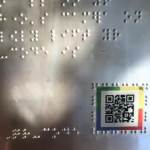
With a focus on sound elements in the e-literary, Hannah Ackermans (University of Bergen, Norway) insightfully traces the role of accessibility and (dis)ability in electronic literature. Problematizing the universality of electronic literature practices and rewriting the familiar concepts (such as defamiliarization or constraint), she uses the notion of accessibility as a perspective that both proposes inclusive models of electronic literature and helps to understand creative work on a fundamental, material level.
Making Writing Harder: Computer-Mediated Authorship and the Problem of Care
Kyle Booten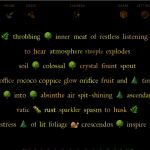
Literary forms seen as tools of mind transgressing the field of the literary and repurposing digital media so that they are capable of refocusing cognition in beneficial ways – these are the lines of thought shaping Kyle Booten’s analysis of algorithmic co-writers. To be able to respond to both challenges, it is proposed that researchers rigorously and systemically study how digital tools are being creatively used and repurposed, learning from models that have emerged within the mainstream Human-Computer Interaction research.
How to Re-Hijack Your Mind: Critical Making and the ‘Battle for Intelligence’
Kyle Booten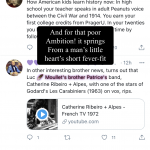
To browse the internet is to subject oneself to sophisticated and unceasing techniques of attention-capture, of which the pop-up advertisement is only the most crass and vexatious example. This paper describes the development of Nightingale, a web browser extension that fights distraction with distraction. It does this by injecting the web with pop-up ads consisting of semantically-relevant fragments of the poetry of Keats. Nightingale represents an attempt to engage in “noöhacking”—that is, repurposing the cognitively-destructive aspects of contemporary digital media in order to care for one’s own mind.’
Restoring the ‘Lived space of the body’: Attunement in Critical Making
Kelsey Cameron, Jessica FitzPatrick
In this article, Kelsey Cameron and Jessica FitzPatrick propose attunement, a conceptual intervention that returns lived experience to critical making. They argue for attunement in three areas: disciplinary recognition of making, labs and other university maker spaces, and campus-community engagement. Attunement helps bring equity into critical making, highlighting how larger systems shape individual acts of making.
River: Forking Paths, Monsters, Simultaneous Timelines and Continuity over 25 Years of Creative Practice
Caitlin Fisher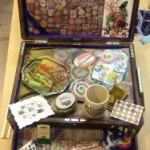
FEATURED ARTIST: In this essay, Caitlin Fisher reflects on the ideas, processes, and approaches that have shaped and influenced her work in digital storytelling and electronic literature for over 25 years. She invokes theorists like Borges, Haraway, and Aristotle and critical concepts of hybridity, string theory, hypermedia, and spatial narratives to illuminate readers about the simultaneous timelines, continuity, and forking paths that run through the river of her work.
How to Design Games that Promote Racial Equity
Lai-Tze Fan, Kishonna Grey, Aynur Kadir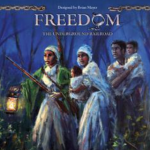
In this conversation and accompanying "How to Not" guide, Drs. Lai-Tze Fan, Kishonna Gray, and Aynur Kadir consider responsible theories and methods towards racial equity, racial justice, and anti-racism in game design. Their main focus is on how games can provide a platform for helping people understand and learn about these issues.
Applied Media Theory, Critical Making, and Queering Video Game Controllers
Jason Lajoie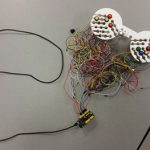
This essay explores intersections among queer theory, critical making methodology and inclusive design through a research creation piece that aims to problematize normative video game controller schemes.